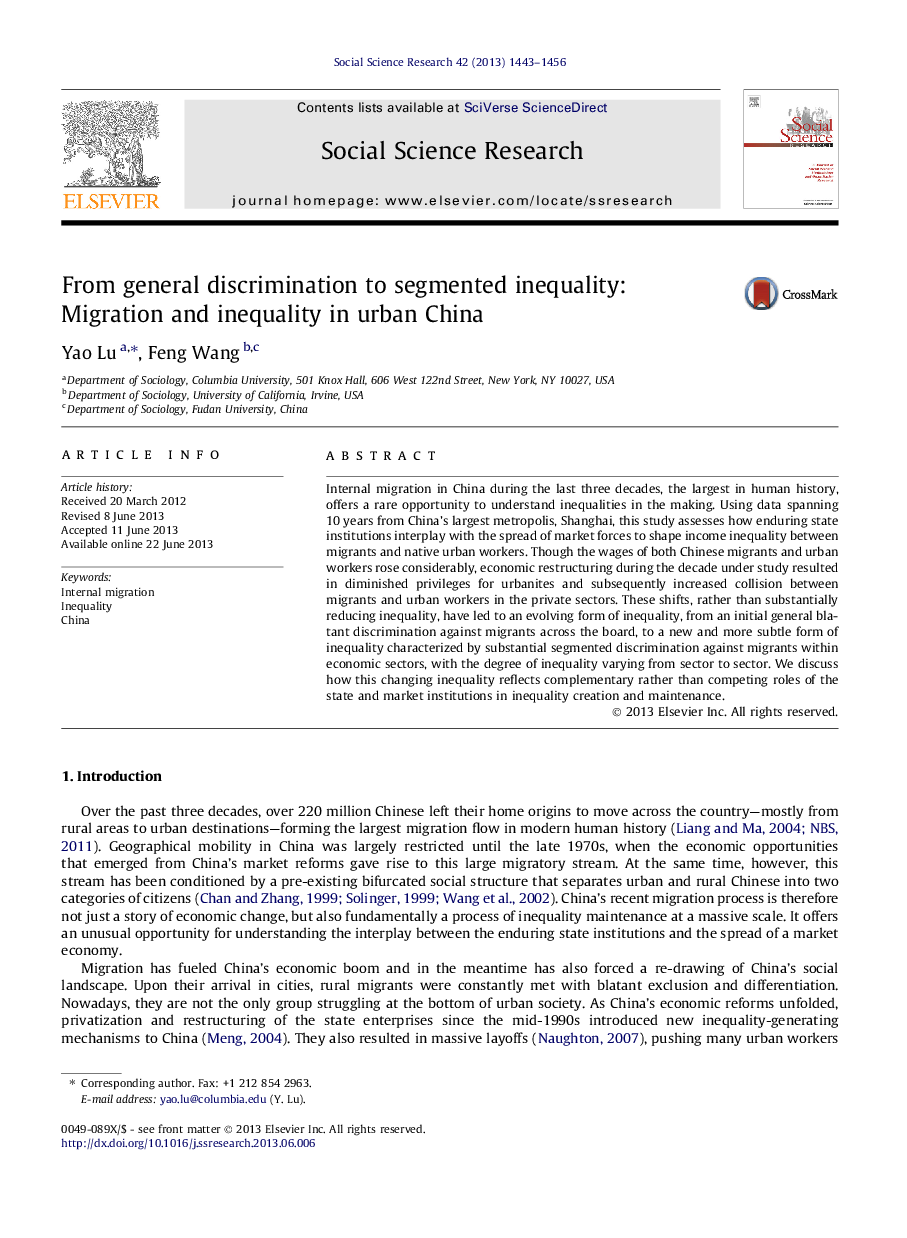| Article ID | Journal | Published Year | Pages | File Type |
|---|---|---|---|---|
| 955980 | Social Science Research | 2013 | 14 Pages |
•How has income inequality between migrants and urban residents changed in China?•We use data spanning 10 years from China’s largest metropolis, Shanghai.•The economic reform led to increased competition between migrants and urban workers.•We find a change from general inequality to segmented discrimination toward migrants.•Results reflect complementary roles of the state and market in inequality processes.
Internal migration in China during the last three decades, the largest in human history, offers a rare opportunity to understand inequalities in the making. Using data spanning 10 years from China’s largest metropolis, Shanghai, this study assesses how enduring state institutions interplay with the spread of market forces to shape income inequality between migrants and native urban workers. Though the wages of both Chinese migrants and urban workers rose considerably, economic restructuring during the decade under study resulted in diminished privileges for urbanites and subsequently increased collision between migrants and urban workers in the private sectors. These shifts, rather than substantially reducing inequality, have led to an evolving form of inequality, from an initial general blatant discrimination against migrants across the board, to a new and more subtle form of inequality characterized by substantial segmented discrimination against migrants within economic sectors, with the degree of inequality varying from sector to sector. We discuss how this changing inequality reflects complementary rather than competing roles of the state and market institutions in inequality creation and maintenance.
